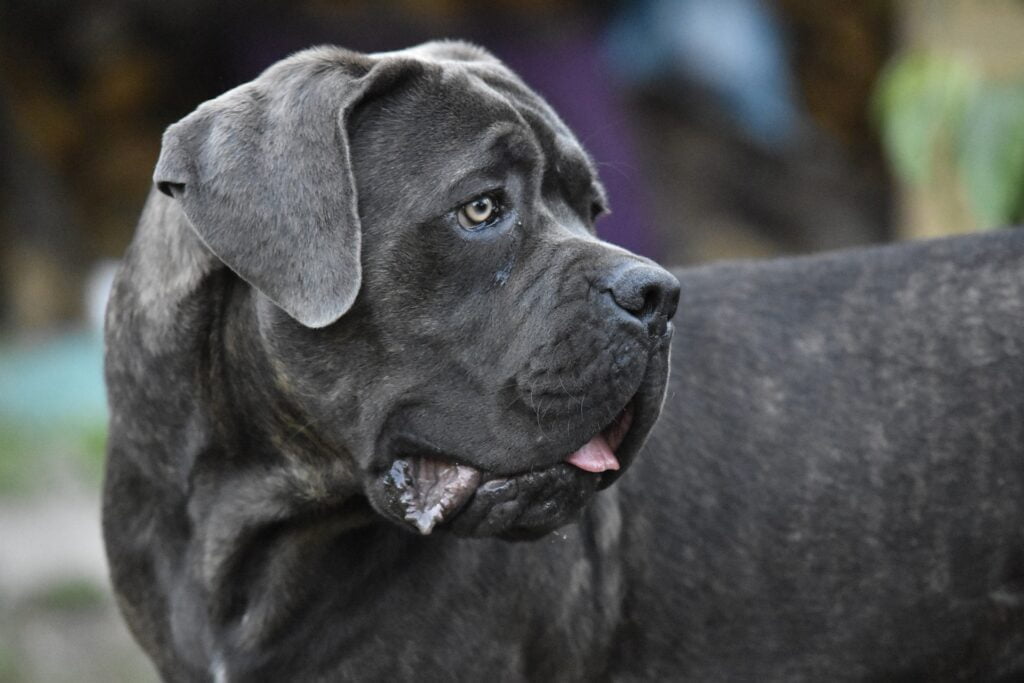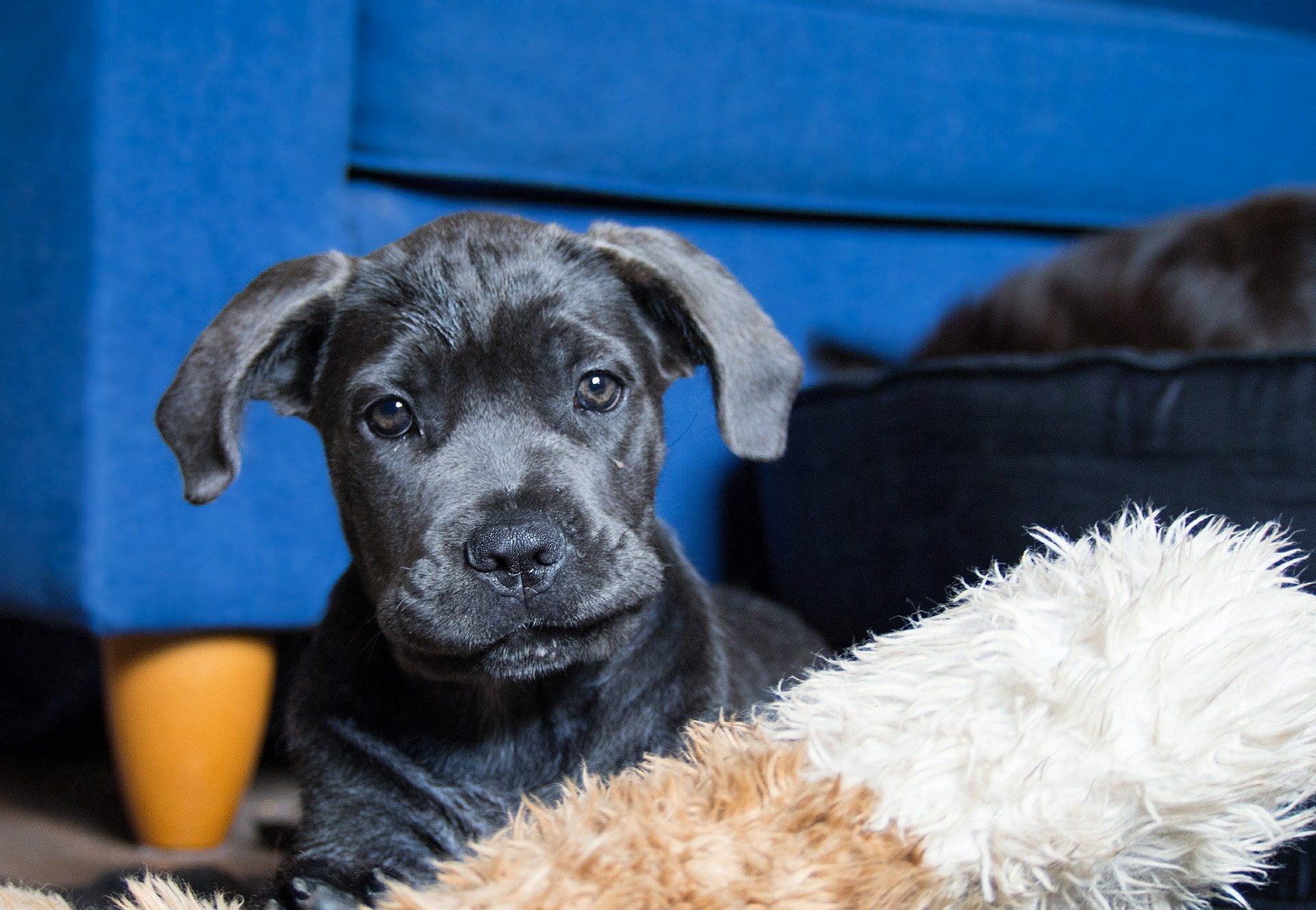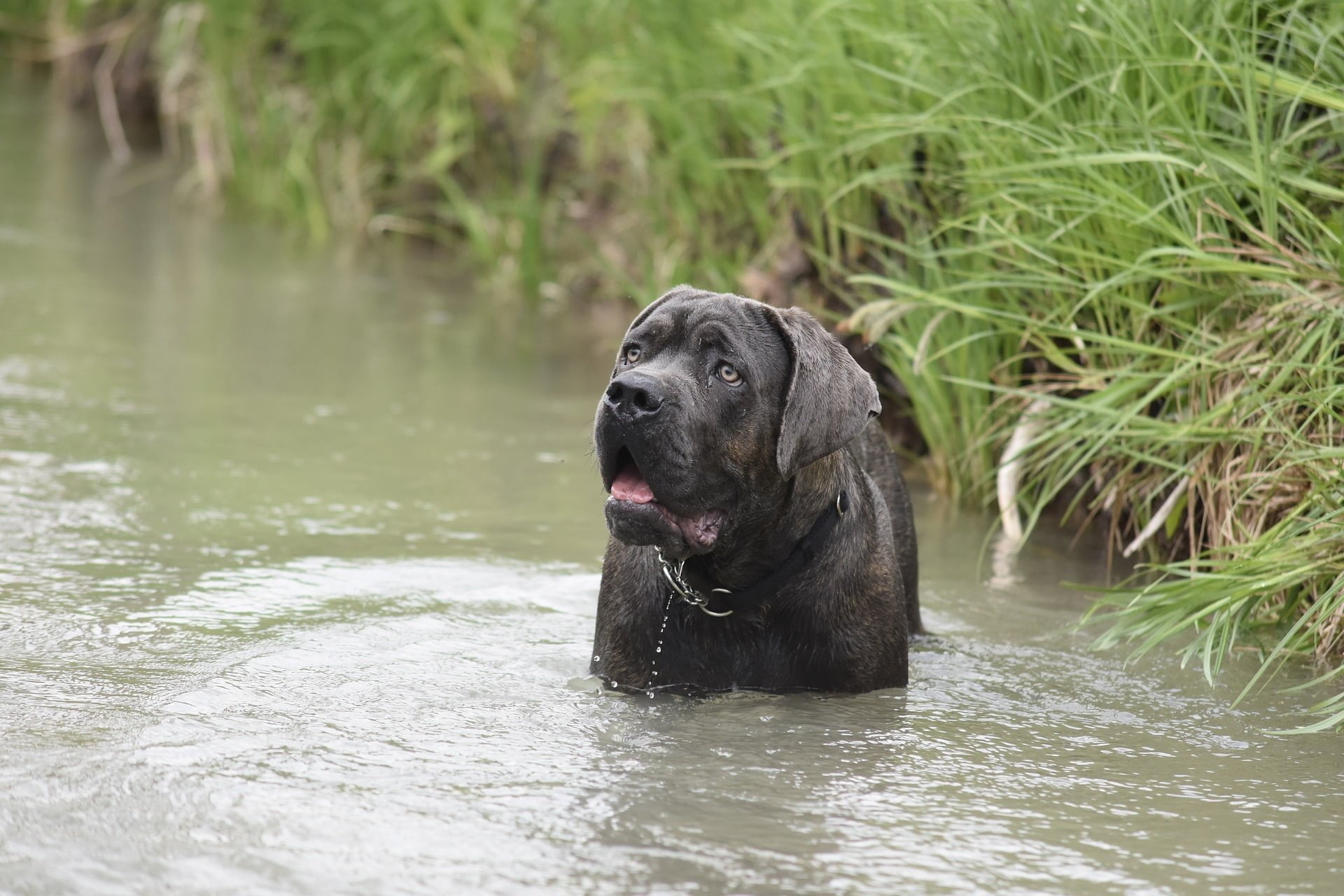
- Home
- Stud Dogs
Some of our most popular Stud Dog Breeds:
- Puppy Litters
- Dog Services
- Dog Breed Profiles
- Blog
- Contact Us
Cane Corso Breed Profile
- Breed Profiles
- Dog Breeds
- May 20
- Share post

The Cane Corso – which is pronounced “Kah-Nay Kor-So” – is an old Italian breed. They are large, muscular working dogs that can make excellent companions and protectors for a family. These purebred dogs are a powerful, intelligent and athletic breed, originally used to guard property and hunt large game.
When purchasing a Cane Corso, the breed is not an appropriate choice for first-time or inexperienced dog owners – instead, they need leaders with firm and consistent attributes that will benefit from the Corso’s obedience. However, this breed must not be misunderstood, as they have a huge amount of loyalty and love for their family, but this is not noticeably demanding in terms of needing constant attention and handling.
Typical Cane Corso Facts:
Height: 23.5-27.5 inches (60-70 cm)
Weight: 80-120 lbs (36-54 kg)
Average Litter Size: 4-8 puppies
Life Expectancy: 10-12 years
Kennel Club Classification: Working Group
Good with Children: No
Colour of a Cane Corso:
The Cane Corso’s coat is coarse and short. Colours include black, grey, fawn, red and chestnut, and it may or may not include a brindle pattern. Solid red or fawn-coloured Corsos may also have a grey or black mask.

Grooming a Cane Corso:
The Cane Corso has a short, stiff coat, and they tend to shed heavily twice a year. It is important to introduce the Cane Corso to grooming at a young age, so they accept handling calmly. Due to the Cane Corso’s short and coarse coat, it is important to use a natural bristle brush or a mitt once a week to prevent excessive shedding. When dirty, or once every two or three months, bathe your Cane Corso using a mild shampoo and a coat conditioner or polish to maintain a shiny coat. Other grooming basics include checking the ears and brushing teeth with a soft toothbrush once a week in order to regulate cleanliness. Claws should be trimmed once a month or when needed to avoid any pain from overgrowth.
Cane Corso Common Ailments/Health Issues:
The Cane Corso is a generally healthy breed of dog, however, their size and muscle ratio can sometimes cause some common issues for this breed, such as hip and elbow dysplasia, epilepsy, cherry eye, thyroid problems and stomach bloating from eating or drinking too fast. However, if Cane Corso owners maintain awareness and have regular examinations, these should hopefully be avoided. The recommended health tests that owners should be conscious of are hip and elbow evaluations and cardiac exams.
Training a Cane Corso:
When it comes to training, socialising early and puppy training classes are highly recommended for this breed. With protective and territorial traits, early socialisation and consistent obedience training will help to develop good manners and keep them from dominating the household. Cane Corsos are extremely intelligent and have a need to please their leader due to their loyalty, which makes training generally easy. It is important not to use punishment or forceful techniques, as the Corso may mistake this for threatening behaviour and resist or even come into conflict with you.
Exercise for a Cane Corso:
The Cane Corso needs to be exercised frequently in order to sustain physical and mental stimulation. Around two hours every day is the recommended amount of exercise, along with the provision of space to play or walk around during the day. However, avoid letting a Cane Corso run loose – keep them contained with a secure fence when letting them roam in the garden. A walk or run of at least a mile in both the morning and evening will maintain their agility and strength. It is also advised to give Cane Corsos mental stimulation, such as learning tricks or practising obedience.

History of the Cane Corso:
The Cane Corso dates back to the Roman Empire. They are an Italian mastiff-type breed, known for being highly prized hunters and protectors that would accompany soldiers in Roman battle and serve as auxiliaries, assisting many Roman victories. Their name lives up to this, originating from the Italian word for dog, “cane”, and the Latin word “cohors”, meaning “guardian” or “protector”.
The Cane Corso is a member of a family of breeds that includes Mastiffs and Dogues de Bordeaux. After the Roman war period had ended, the Cane Corso quickly adapted to a civilian lifestyle. They were used for protecting farming land, driving livestock and hunting large game, including wild boar, bears and deer.
World War I and II had a considerable impact on the population of the Cane Corso. Owners were drafted for war and many Corsos were killed during household invasions due to their aggressive and protective manners. By the end of World War II, farming technology advanced and firearms replaced the need for dogs to protect land, meaning the desire for Cane Corsos had declined, and by the mid-20th century, the breed had almost fallen into extinction.
However, in the mid-1970s, Cane Corso enthusiasts were dedicated to protecting the breed using selective breeding. The Cane Corso breed survived and was later introduced to the United States and the rest of Europe in the early 1980s.
The breed was officially recognised by the Italian Kennel Club in 1994 and was fully documented in 2007 by the World Canine Organisation.
Today, the Cane Corso has grown significantly in popularity. In 2020, it ranked 30th amongst the nation’s most popular dog breeds.
Cane Corso Stud Dog Listings
A dog owner since the early 80s, after convincing his parents to buy a Yorkshire terrier named Sadie, Darren created Dream Dogs so dog owners could find the best dog related information on the Internet.